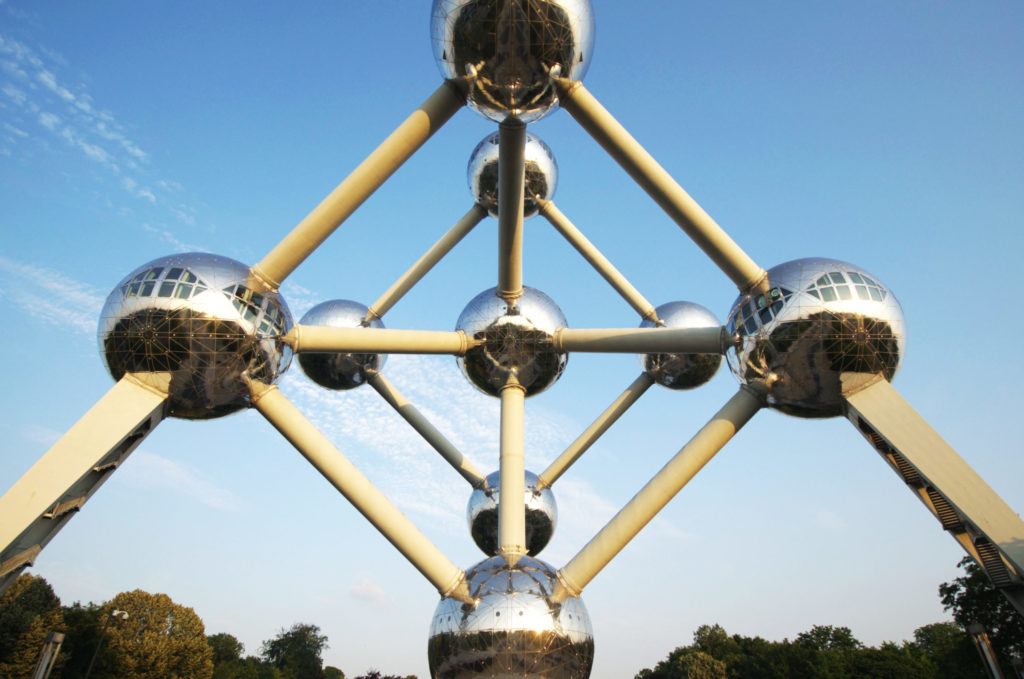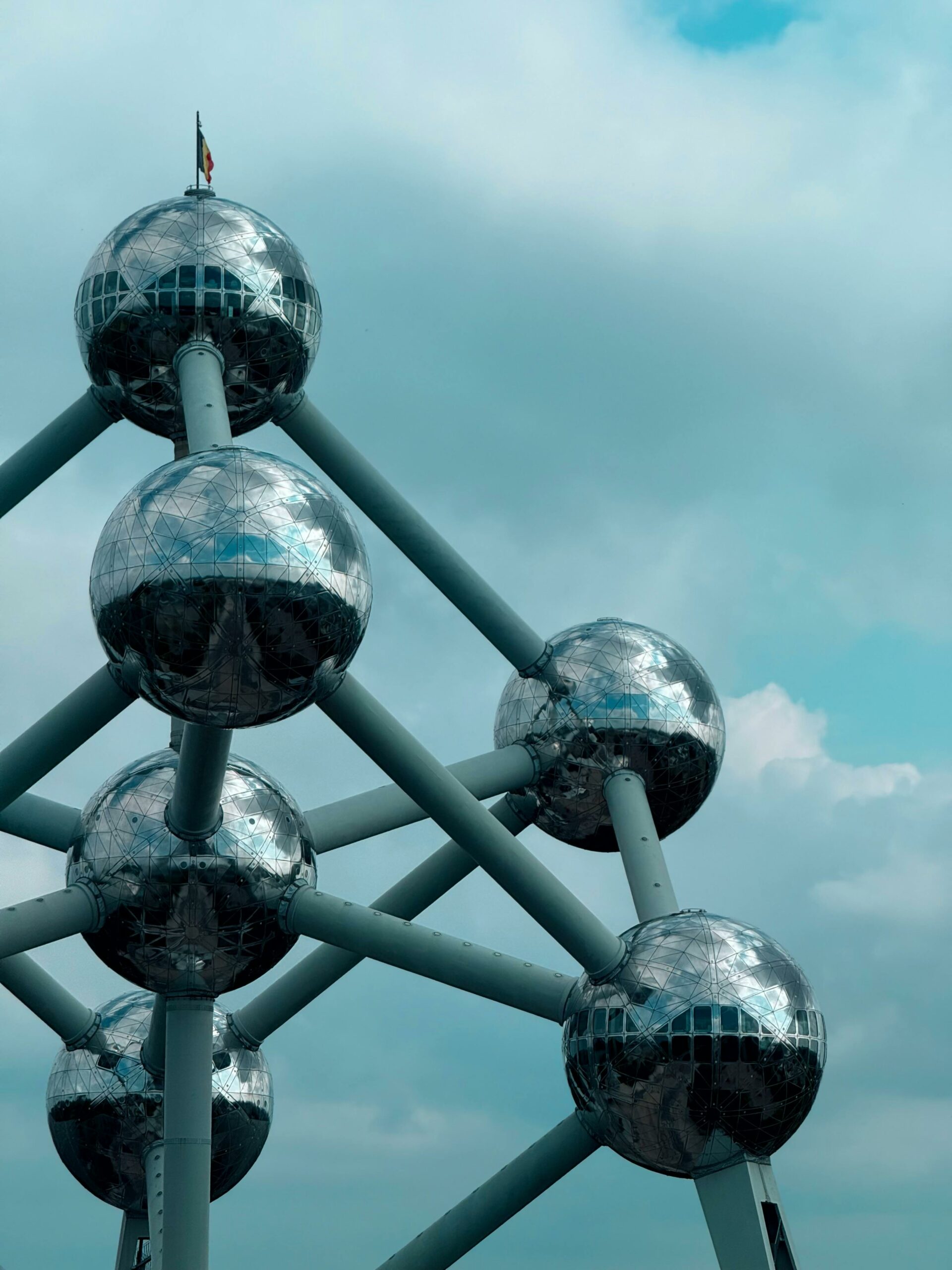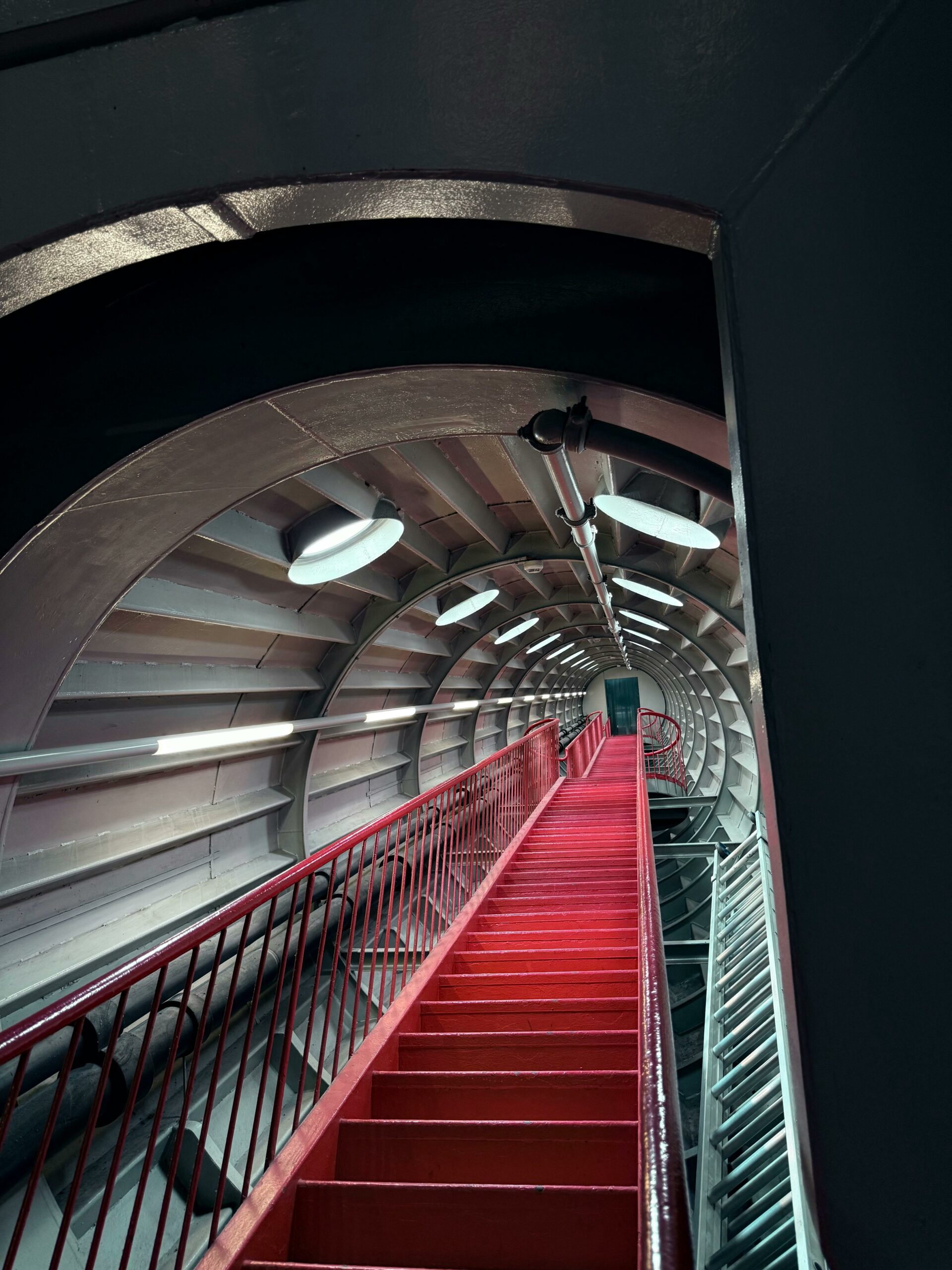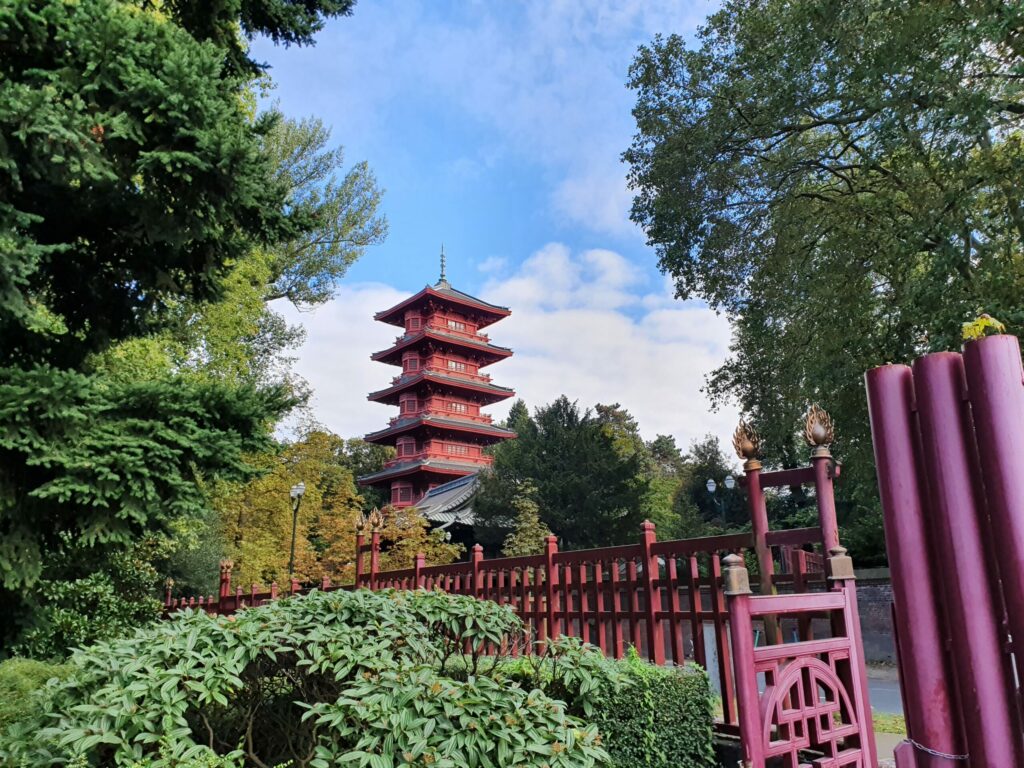
The Atomium is a monument built for the 1958 World’s Fair and represents the conventional unit cell of an iron crystal enlarged 165 billion times.
Galerie photos
Description
The Atomium, designed by engineer André Waterkeyn and built by architects André and Jean Polak for the 1958 Brussels World’s Fair, has become one of the most iconic symbols of the Belgian capital, alongside the Manneken-Pis and the Grand Place. As an emblematic monument, the Atomium embodies the bold spirit of an era that sought to unite humanity’s destiny with scientific progress.
Overlooking the city from a height of 102 meters, this hybrid structure—between sculpture and architecture—originally weighed 2,400 tons, a figure that slightly increased to 2,500 tons after renovation in 2006. Made of a steel frame supported by three bipod pillars, the Atomium consists of nine spheres, each 18 meters in diameter, connected by 20 tubes with a diameter of 3.3 meters. Each of the eight peripheral spheres and the central one represent an atom of an enlarged iron crystal unit cell, originally covered in aluminum.
Six of the nine spheres are open to the public, offering two main floors and a lower level reserved for services. The central elevator, installed by the Belgian company Schlieren (later acquired by Schindler), was the fastest of its time, reaching a speed of 5 meters per second and carrying 22 people to the top in just 23 seconds. In addition, the escalators located in the oblique tubes are among the longest in Europe, with the largest measuring 35 meters in length.








